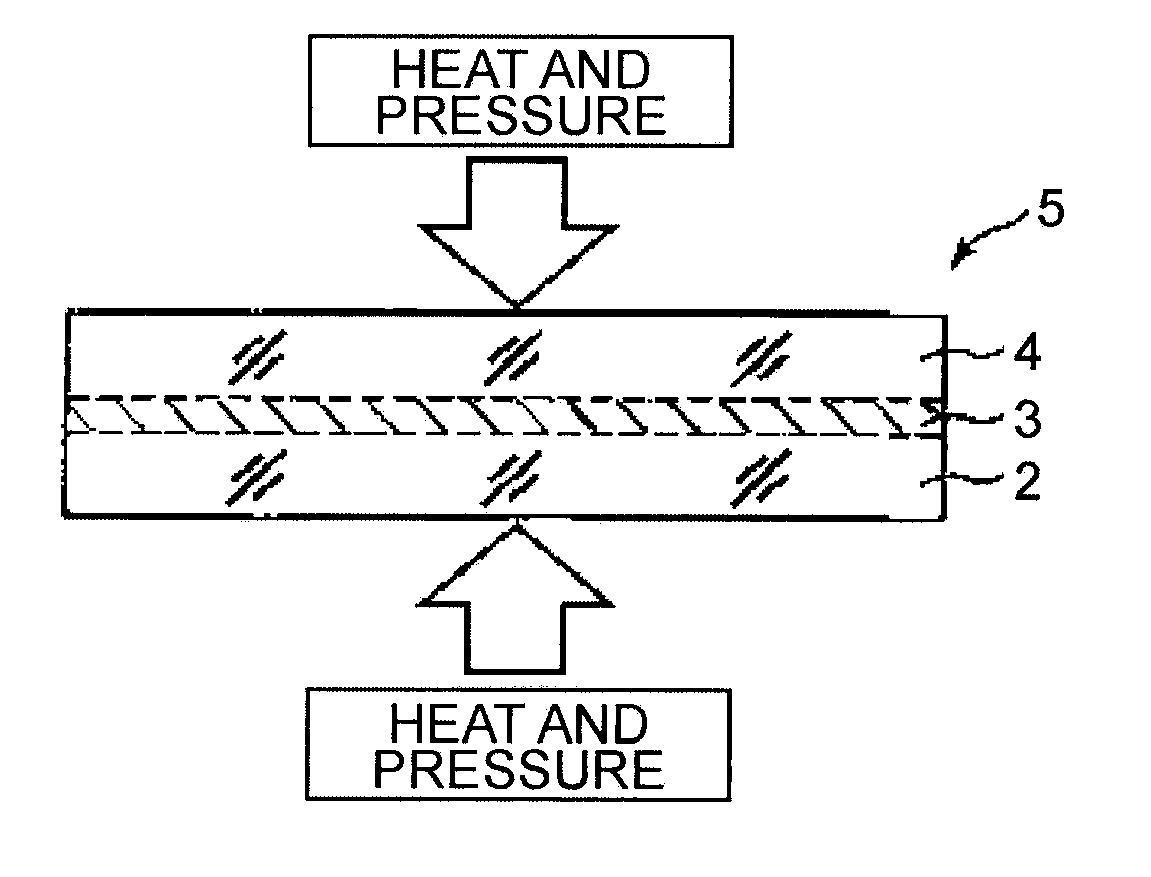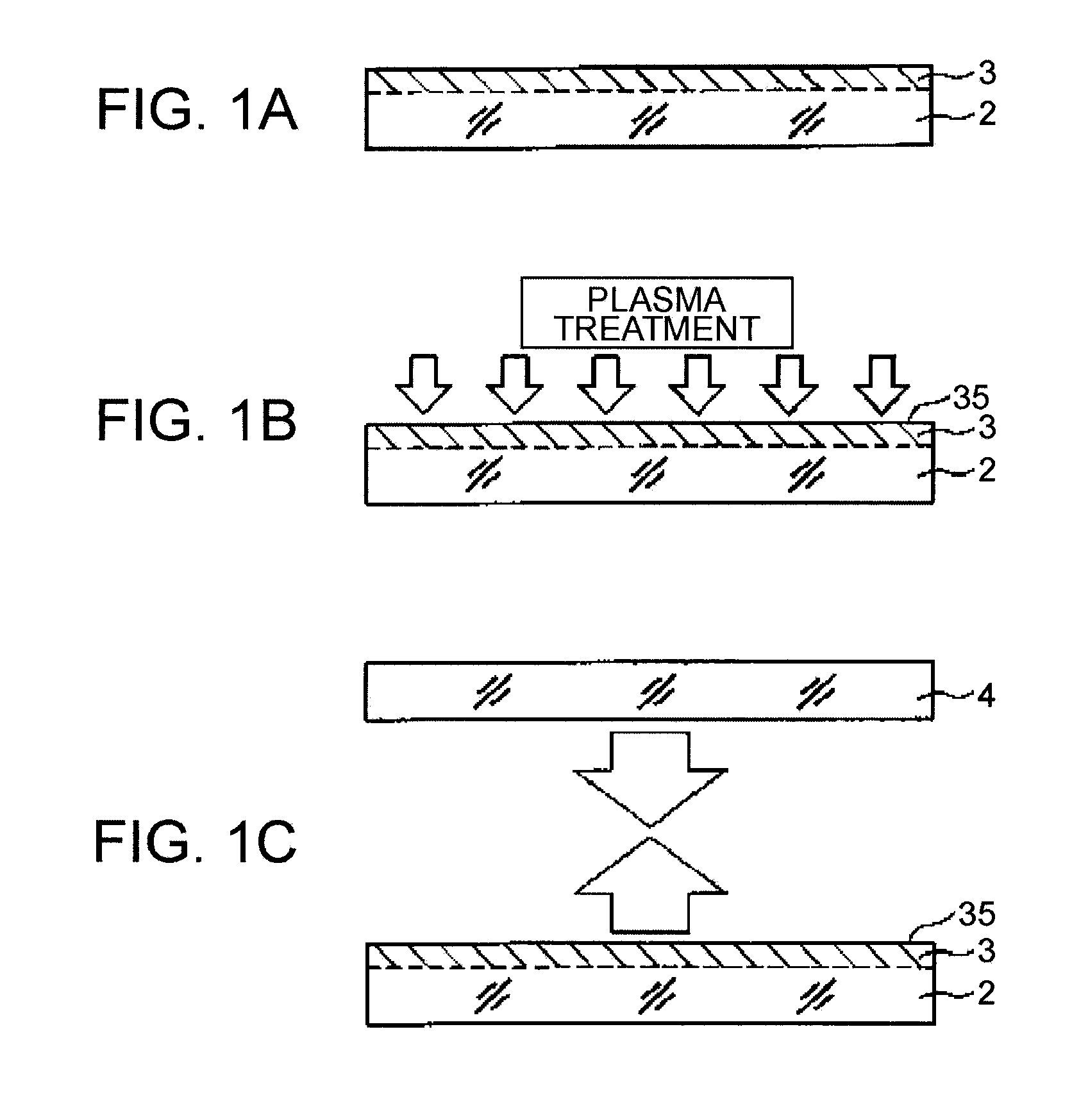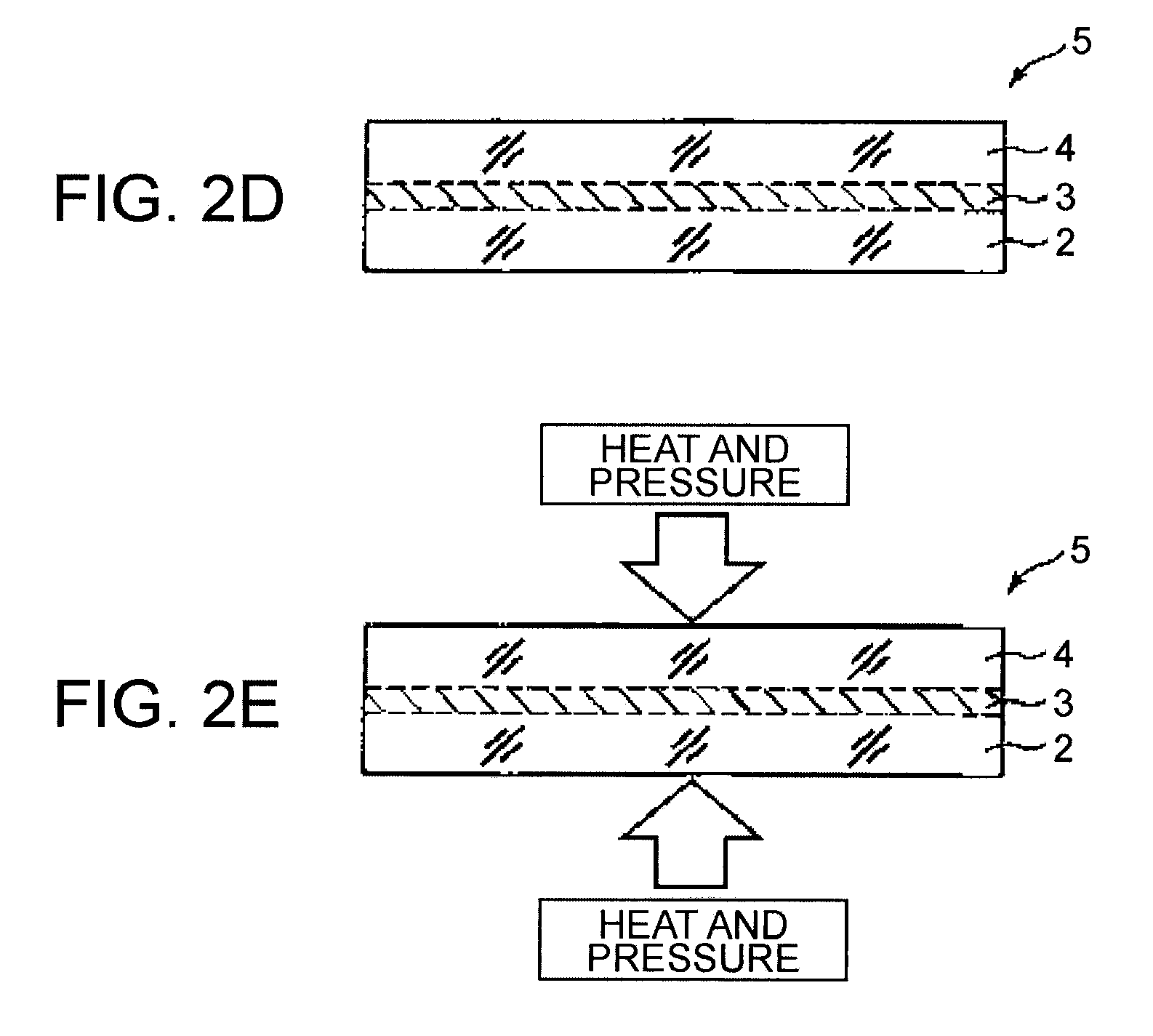Optical element and method for producing same
- Summary
- Abstract
- Description
- Claims
- Application Information
AI Technical Summary
Benefits of technology
Problems solved by technology
Method used
Image
Examples
first embodiment
[0082]Next, a description will be given of a method for producing an optical element according to a first embodiment.
[0083]FIGS. 1A to 2E are longitudinal sectional views explaining the production method of the first embodiment. In the description below, upper and lower sides, respectively, in FIGS. 1A to 2E, will be referred to as “top” and “bottom”, respectively.
[0084]The method for producing an optical element of the first embodiment includes preparing the first and the second optical components 2 and 4 to form the bonding film 3 on a surface of the first optical component 2 by plasma polymerization (step 1); applying energy to the bonding film 3 (step 2); and bonding together the first and the second optical components 2 and 4 via the bonding film 3 to obtain a multi-layered optical element 5 (step 3). The steps will be sequentially described below.
[0085]1. First, the first and the second optical components 2 and 4 are prepared.
[0086]The optical components 2 and 4 are bonded tog...
second embodiment
[0246]Next, a description will be given of a method for producing an optical element according to a second embodiment.
[0247]FIGS. 7A to 7D are longitudinal sectional views explaining the method for producing an optical element according to the second embodiment. In the description below, upper and lower sides, respectively, in FIGS. 7A to 7D, will be referred to as “top” and “bottom”, respectively.
[0248]Hereinafter, the description of the method of the second embodiment will focus on points that are different from the first embodiment, whereas descriptions of the same points as in the first embodiment will be omitted.
[0249]The method of the second embodiment is the same as the method of the first embodiment except that a bonding film is formed on a surface of each of the optical components 2 and 4 to bond the components 2 and 4 together such that the bonding films are closely adhered to each other.
[0250]Specifically, the method for producing an optical element according to the secon...
example 1
[0285]First, each quartz crystal substrate was prepared for each of the first and the second optical components. The quartz crystal substrate for the first optical component had a length of 20 mm, a width of 20 mm, and a mean thickness of 2 mm, and the quartz crystal substrate for the second optical component 4 had a length of 20 mm, a width of 20 mm, and a mean thickness of 1 mm. The quartz crystal substrates were subjected to optical polishing. The quartz crystal substrates had a refractive index of 1.546 with respect to light having a wavelength of 546 nm.
[0286]Then, each of the substrates was placed in the chamber 101 of the plasma polymerization apparatus 100 shown in FIG. 5 to perform surface treatment using oxygen plasma.
[0287]Next, on a surface of each substrate subjected to the surface treatment was formed a plasma-polymerized film having a mean thickness of 150 nm. Conditions for formation of the film were as follows:
[0288]Conditions for Formation of Film
[0289]Composition ...
PUM
| Property | Measurement | Unit |
|---|---|---|
| Fraction | aaaaa | aaaaa |
| Thickness | aaaaa | aaaaa |
| Wavelength | aaaaa | aaaaa |
Abstract
Description
Claims
Application Information
 Login to View More
Login to View More - R&D
- Intellectual Property
- Life Sciences
- Materials
- Tech Scout
- Unparalleled Data Quality
- Higher Quality Content
- 60% Fewer Hallucinations
Browse by: Latest US Patents, China's latest patents, Technical Efficacy Thesaurus, Application Domain, Technology Topic, Popular Technical Reports.
© 2025 PatSnap. All rights reserved.Legal|Privacy policy|Modern Slavery Act Transparency Statement|Sitemap|About US| Contact US: help@patsnap.com



